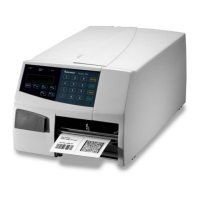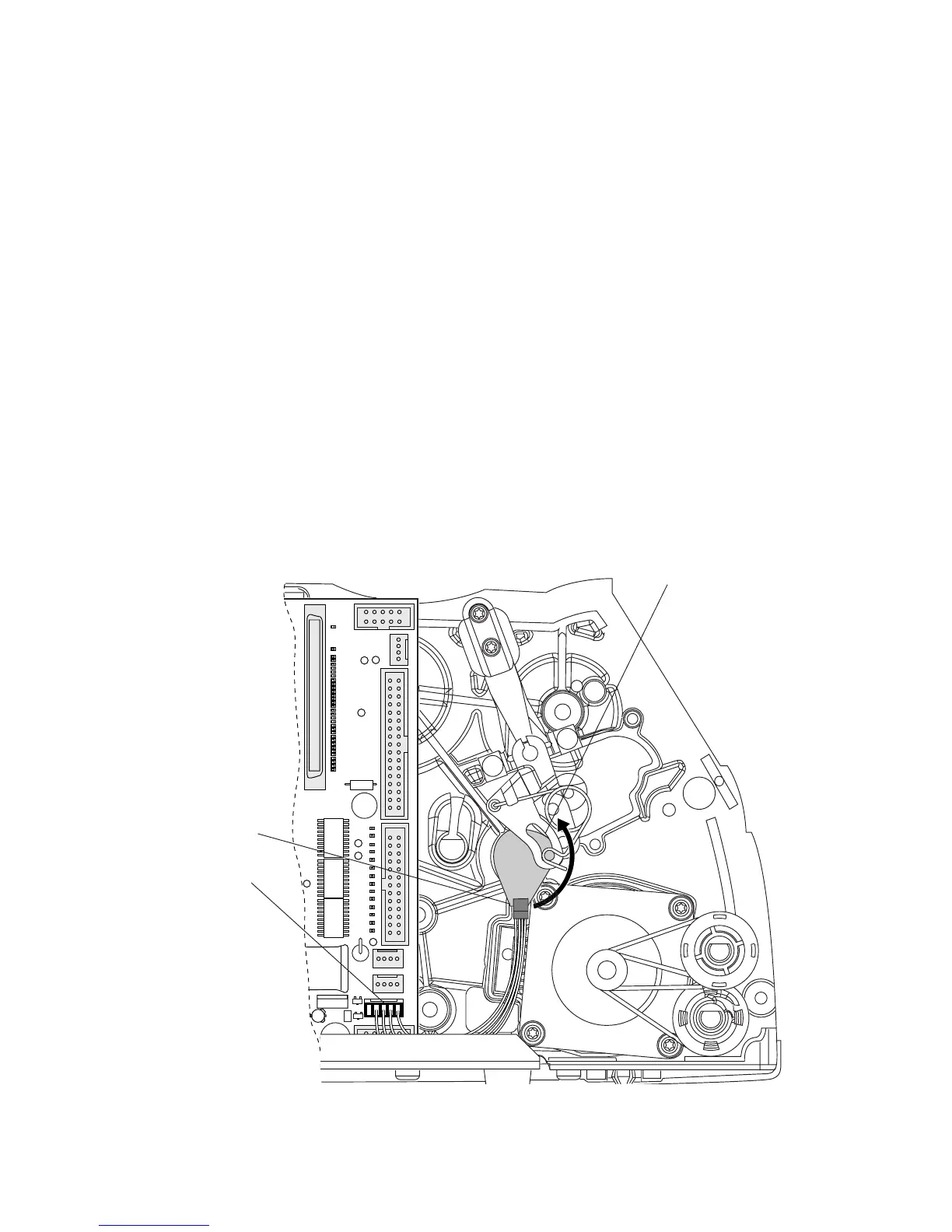Intermec EasyCoder PF2i, PF4i, and PF4i Compact Industrial—Service Manual 97
Chapter 7—Print Mechanism
J84
J58
HEADLIFT
7.7 Headlift Sensor
Description
The purpose of the headlift sensor is to detect whether the printhead is
raised or lowered. To avoid the risk of overheating the printhead dots,
printing cannot be performed when the sensor detects that the printhead
is raised (the media serves to cool the printhead). An ever so slightly raised
printhead would also impair the printout quality. Thus, it is important that
the printhead is properly engaged and a suffi cient pressure is applied before
the sensor detects a “Closed” condition.
The sensor is fi tted using a barbed shaft that is pressed into a hole in the
center section. The sensor consists of a light-emitting diode and a photo-
electric sensor with housing and cables. The headlift sensor is connected to
J58 (marked “HEADLIFT”) on the CPU board.
A beam of light is constantly transmitted from the diode. When the
printhead is in closed position, the light beam is interrupted by an angular
plate at the end of the crank shaft. As soon as the headlift lever is activated,
and even before the printhead starts to raise, the plate is moved out of
the sensor gap and the sensor can detect the light beam. This condition
is managed by the fi rmware. In Fingerprint, an error message (1022
“Head Lifted”) will be returned if you try to print a label. In IPL, the error
message “Print Head UP/Press Feed” is displayed.
Plate on crank shaft
(printhead lowered)
Headlift sensor
Connect here!
To improve visibility, no transfer ribbon mechanism is shown.

